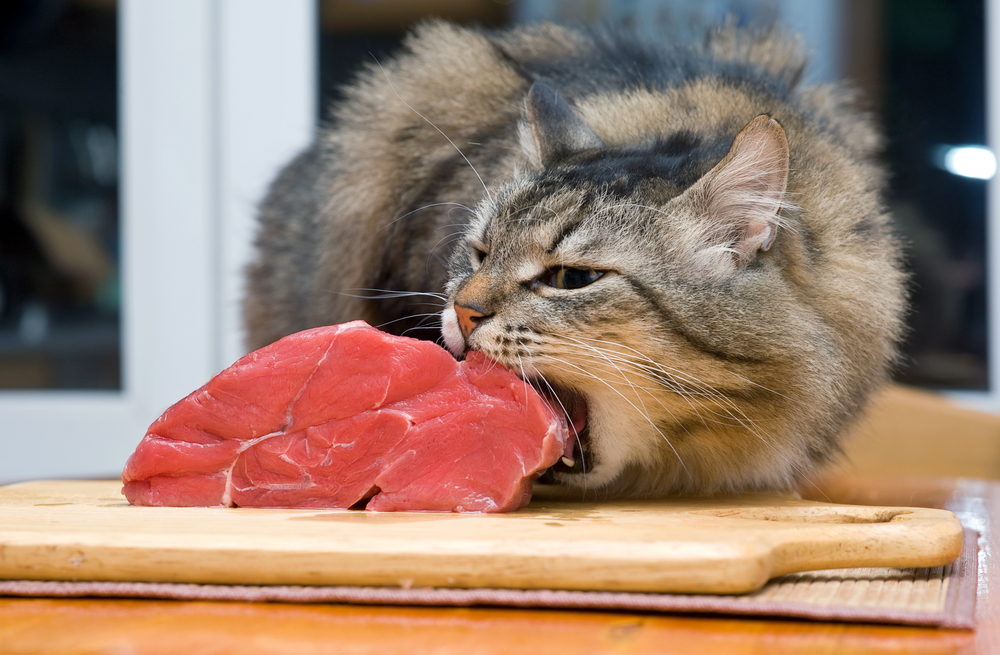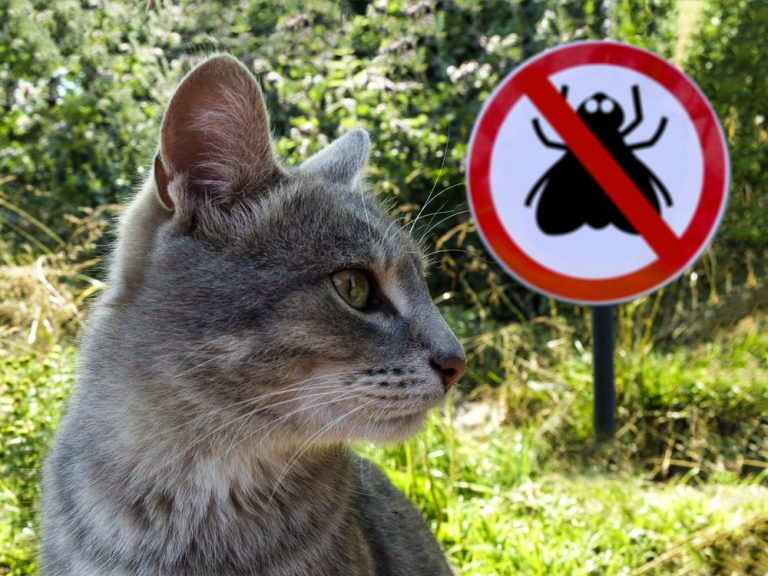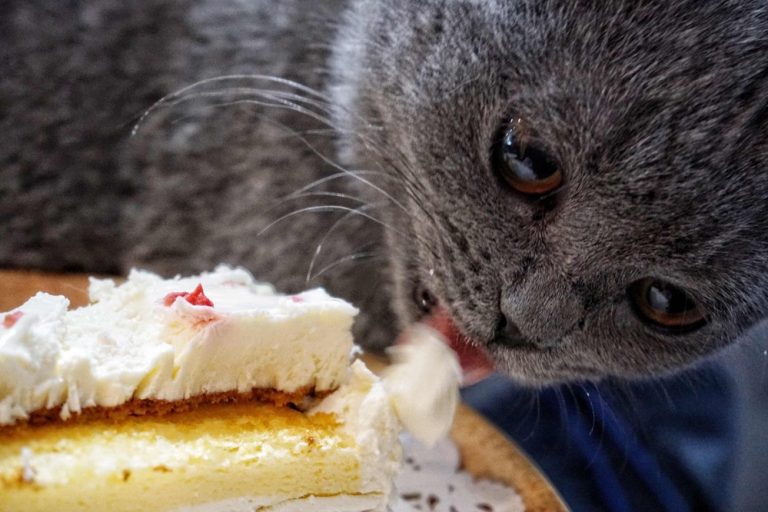What Foods Can Cats Eat Raw? The Pros and Cons of a Raw Cat Food Diet
There are a lot of misconceptions about raw-feeding cats. Some people think that it is more expensive, or that it is more work.
The truth is, once you get the hang of it, raw feeding can be just as easy (or even easier) than feeding processed food. But first, you need to know what foods can cats eat raw.
In this guide, we will walk you through everything you need to know about raw feeding cats: from what foods to feed them, to how much they should eat, and even tips on transitioning them over to a raw diet.
Why feed raw cat food?

Feeding your cat a raw diet has several benefits including improved digestion and energy levels, better weight management, improved oral health, increased energy levels, and improved health overall.
Cats are more likely to become healthier by eating a raw diet.
Why? Think about it.
The diet is packed with nutrients in their natural form and you catto can easily absorb them.
Remember that their digestive systems are specifically designed to digest meat and they can easily get the natural minerals, vitamins, and enzymes.
Raw meat is also more of protein and less carbs, just what your cat needs.
Cats also require taurine in their diet, and this nutrient is found mainly in meat.
If your cat’s raw diet doesn’t include enough meat, they may become deficient in taurine.
This can lead to health problems like heart disease, impaired vision, and reproductive problems.
Taurine deficiency is also why cats chase and eat flies. This may seem gross to you but they’re just trying to fill a gap.
If your kitto is eating flies, you might want to head over to this post on why cats eat flies to better understand the behavior and how to stop it.
What foods can cats eat raw and is it okay to give your cat raw cat food?
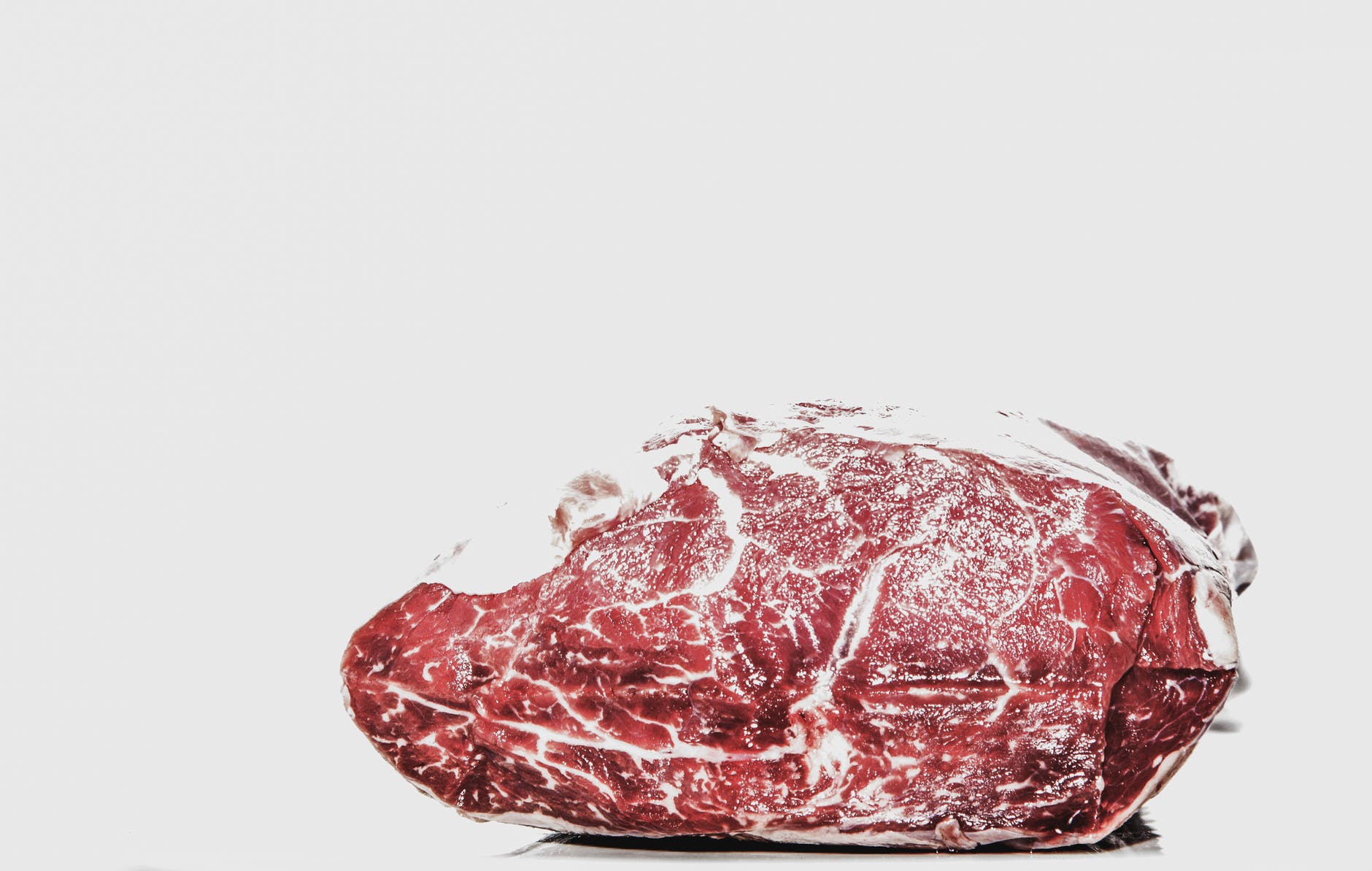
It is okay to give cats raw meat. However, there is the risk of infection from Salmonella, E-coli and other worms. Good news is a cat’s stomach can handle it.
Felines have a short stomach which minimizes the time the bacteria spends in there.
The acidic nature easily kills the the bacteria keeping your cat safe.
So, unless your kitto has a weakened immune system, there is no need to worry.
Additionally, you can buy your meat in approved places to reduce the risk of infection.
Make sure you also involve your vet before deciding on a raw diet just to make sure your pet doesn’t have any underlying problem.
What kind of raw meat can I feed my cat?
1. Chicken
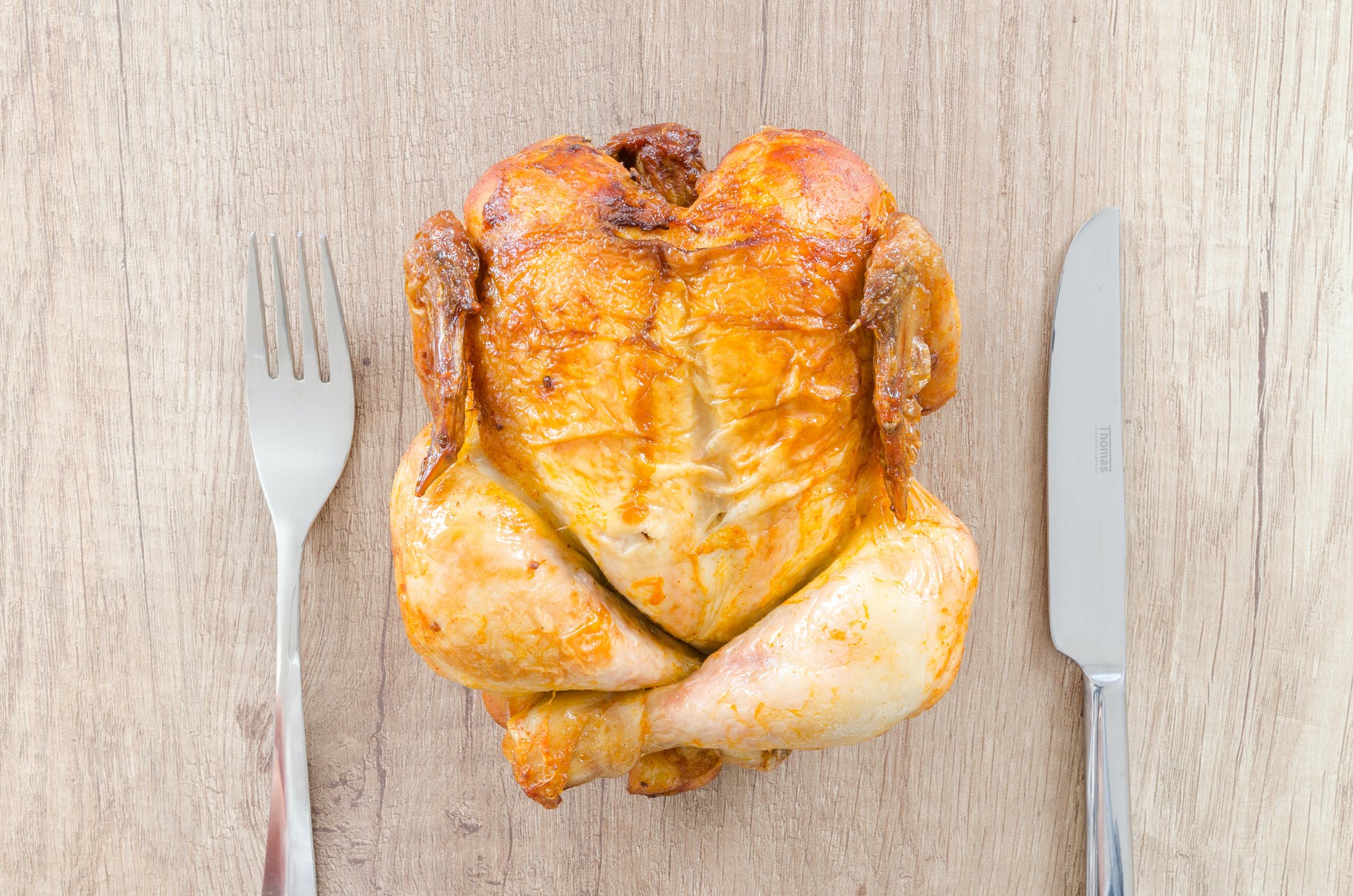
Cats can eat raw chicken. The bird is packed with protein, protein, selenium, niacin, phosphorus, and vitamins B6 and B12 and has considerably low sodium levels.
It should be free of seasoning, salt and anything that might upset your cat’s tummy. The chicken meat should also be fat-trimmed as possible.
Although chicken is a great option for a raw diet, there is a reason the ASPCA lists it as a no-no. When raw, the poultry might be a carrier of the E Coli and Salmonella bacteria.
To prevent this, make sure you source your chicken from a verified seller who uses sanitary procedures to handle their meat.
Human-grade raw meat and bones are recommended for feeding your cat to avoid bacteria-carrying raw meat bones.
2. Salmon
Cats can eat raw salmon. The fish is high in Omega 3 fatty acids which are essential in maintaining a cat’s coat. The fatty acids also boost immunity making your pet stronger.
Apart from the fatty acids, salmon is also packed with essential nutrients such as potassium, B vitamins, selenium, and niacin, which provide cats with numerous health benefits.
Cats and salmon go together like peanut butter and jelly. But did you know there are actually different ways of feeding your cat the different salmon types? You can check that out on this cool post on cats eating salmon.
If you’re curious about whether you should remove the salmon’s skin or not, check out this epic post on 6 reasons why you should feed your cat fish skin.
I have to mention that although raw salmon is a great addition to your cat’s raw diet, there are also some drawbacks. For example, there’s the potential for heavy metal poisoning like lead. Recent studies have also shown that farmed salmons have higher contamination levels than wild salmons.
3. Duck
Cats can eat raw duck. It is packed with proteins, minerals and vitamins that can be greatly beneficial for your cat. Make sure to remove the duck skin and do not add any seasoning, salt or additives.
The bird is a high protein food whose protein levels can be compared to beef and chicken.
Did you know: Duck is red meat, as 80% of its muscle fibers are red, which distinguishes it from other bird meats. Duck legs are white flesh, while duck breasts, or fillets, are incredibly red.
There’s a downside to feeding your kitto some raw duck meat. Some cats get the urge to go hunting and may kill ducks and chickens.
Speaking from experience, my granny’s cat suddenly got an appetite for the neighbors’ ducks after she ate some raw duck meat. She would go hunting and terrorize the neighbor’s chickens and ducks.
Now, this was a very difficult time for us as it forced us to rehome her as the neighbors threatened to kill our catto. So, although cats can eat raw duck meat, I personally wouldn’t recommend it.
4. Beef
Cats can eat raw beef. It’s packed with several essential nutrients for your cat like protein, potassium, magnesium, selenium, zinc, iron, niacin, phosphorus, vit B6 and B12.
Raw beef can contain harmful bacteria and parasites like E Coli, salmonella and Listeria. To avoid this it’s best to stick to human grade meat that’s being handled by a licensed butcher to avoid contamination.
Raw meat products that are marketed as pet food can contain sulfite preservatives, which some cats might not like.
5. Lamb
Cats can eat raw lamb meat. It is a good source of protein, vitamin B 12, heme-iron and other nutrients which are great for your cat’s immune system.
Now, while choosing the lamb to feed your catto, always go for grass-fed lamb over grain-fed.
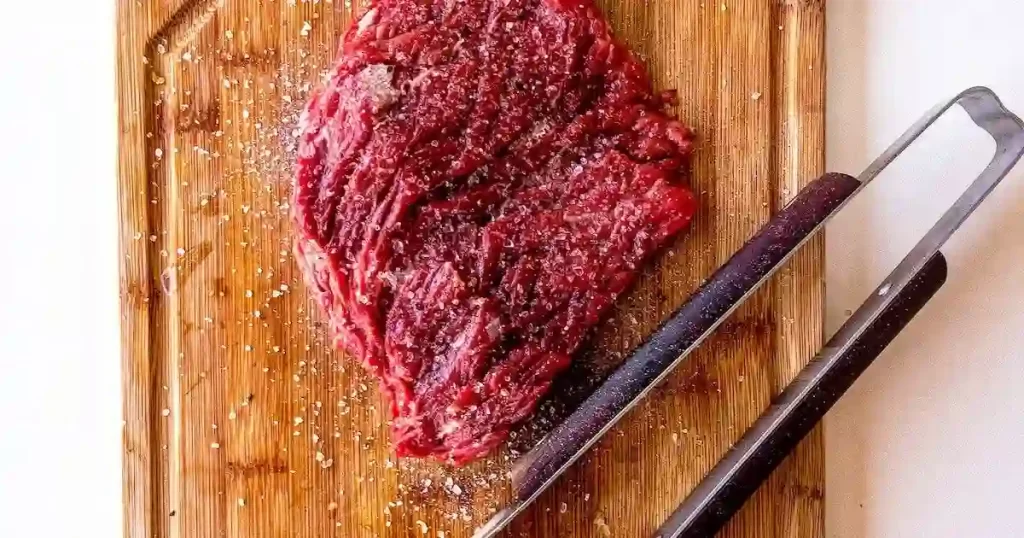
Grass-fed lambs tend to be leaner than grain-fed, and are higher in beneficial omega-3 fatty acids.
On the other hand, grain-fed lambs tend to be higher in saturated fat which can be detrimental to your cat’s health if consumed in excess.
It is also important to trim the fat off before giving it to your cat, as any excess fat can be detrimental to their health.
6. Pork
If you’re looking for a delicious and nutritious meal for your cat, pork is a great choice.
Though some high-fat cuts of pork may cause weight gain, leaner options are perfect for cats.
Pork can be served as an occasional treat, but make sure to avoid giving your cat raw meat – it carries parasites that can be harmful to your feline friend.
Top Vegetables for Your Cat’s Raw Diet
Just as humans need a variety of vegetables in their diets, cats need different types of vegetables too.
The best way to make sure your cat is getting all the nutrients they need is to offer them a selection of raw vegetables. Here are some top veggies for your cat’s raw diet:
1. Broccoli – This cruciferous vegetable is packed with fiber and vitamins C and K.
2. Carrots– These orange root veggies are high in beta carotene, which is great for your cat’s vision.
3. Celery– This crunchy veggie is low-calorie and contains lots of water which helps keep your kitty hydrated.
4. Green beans– These tender beans are a good source of protein and vitamin A.
5. Asparagus– This nutrient-dense veggie is a good source of iron for cats
These are just some examples of some veggies safe for your kitto. I’ve prepared a comprehensive list of all the vegetables that your catto can eat. You can check out the list here of 21 vegetables safe for your cat.
Top Fruits for Your Cat
If you’re looking for a way to add some variety to your cat’s diet, why not try feeding her some fruit? Just be sure that the fruits you give her are nutritionally balanced and don’t make up the bulk of her diet.
Some good fruits to give your cat include:
- Blueberries
- Strawberries
- Raspberries
- Apples
- Watermelon.
You can either chop them up into small pieces or mash them up so they’re easier for your cat to eat.
Just be sure to supervise your cat while she’s eating in case she tries to swallow any large chunks whole.
It’s important to keep in mind that cats need a lot of protein in their diets, so fruit should only make up a small portion of their overall food intake.
And remember that cats should always have access to fresh water – they need it to stay healthy!
I’ve packaged a nice blogpost on 25 fruits your cat can eat that you can check out.
How do I get my cat started on a raw diet?
If you’re considering transitioning your cat to a raw food diet, it’s important to do so gradually over the course of 3 days.
The transition from 100% to 75% is recommended for the first three days of transitioning your cat to a raw food diet.
Once your cat has been accustomed to raw food, you can switch them entirely over and they will no longer need any other type of pet food.
When cats consume raw meat, they have fewer stomach problems and better dental hygiene than those who eat processed foods.
Cat meat can be eaten in a variety of ways: ground up into a pate’, diced into small pieces or even left whole.
Remember that while a cat’s diet should be less than 50% raw and more than 50% cooked food, it is important to provide them with a balanced diet of both types of foods in order to stay healthy, active, and social with humans.
What are the risks of feeding your cat a raw diet?
When it comes to what our cats eat, many of us are torn between the convenience of kibble and the appeal of a raw diet.
Raw meat may contain harmful bacteria such as E. coli or Salmonella, which can cause serious illness in both humans and cats.
In addition, some parasites such as toxoplasmosis gondii, found in raw meat, can infect both animals and people.
Toxoplasmosis is particularly dangerous for pregnant women as it can cause congenital disabilities in their babies.
Another risk associated with feeding your cat a raw diet is that they may become infected with Trichinosis.
This parasite is spread by ingesting infected cysts present in meat. The cysts are often found in pork but also in wild game like rodents.
While the risk of infection is not as high when eating raw meat from your cat specifically, it’s still important to be aware of this potential danger.
A final concern about feeding your cat a raw diet is that they may not get enough of the nutrients they need to stay healthy.
Cats require taurine in their diet, and this nutrient is found mainly in meat. If your cat’s raw diet doesn’t include enough meat, they may become deficient in taurine.
This can lead to health problems like heart disease, impaired vision, and reproductive problems.
Benefits of a raw diet
The benefits of feeding your cat a raw food diet include:
- Improved dental health
- Increased water intake
- High protein levels which supply your cat with important amino acids for a long and healthy life
- Lower carbohydrate levels to help prevent obesity/diabetes
- Improved kidney health
- Better skin and coat health from the amino acids found in the protein blocks.
- Stronger joints and bones from the calcium
- Improved digestion
- Are more natural and unprocessed, providing your cat with the essential nutrients it needs
Can I feed my cat kangaroo meat?
There is some controversy around whether or not it’s safe to feed kangaroo meat to cats. This is because the high-fat content could lead to obesity or other health problems in the long term.
However, kangaroo meat is a low-fat, protein-packed alternative to other meats and is a healthy option for your pet.
So if your cat enjoys eating raw meat, feel free to give him some kangaroo!
At what age should you start feeding your cat raw meat?
You can introduce raw meat as early as 6 weeks of age, but it’s best to wait until your cat is between 20 and 24 weeks old before making the switch. This will give their digestive system time to mature and adjust to the new diet.
It’s important to remember that obesity is common in cats, so be sure to feed them the correct amount of food for their size and weight.
Which cats Should Not Use Raw Diets?
Cats with underlying health conditions, such as those who are immunocompromised, should not use raw diets. Additionally, cats with kidney disease, diabetes, or other medical conditions should avoid raw diets. If your cat is pregnant, nursing, or a senior, you should also avoid raw diets.
Lastly, cats with food allergies or sensitivities should also not use raw diets. It is essential to consult with your veterinarian before deciding if a raw diet is right for your cat.
Are Raw Food Diets Complete & Balanced for cats?
Many people are choosing to feed their cats a raw food diet, and there are a lot of pros and cons to consider before making the switch.
The most important thing to remember is that a raw food diet is not complete and balanced for cats, they still need other foods in addition to raw meat.
If you’re thinking about starting your cat on a raw food diet, be sure to consult with your vet first and make sure they’re on board with the idea.
Even if you are providing all the right nutrients in your cat’s raw food diet, it’s still important to give them a vitamin pack or nutritional supplement to ensure they’re getting all of the nutrients they need.
Without these supplements, your cat may develop health problems down the road.
It’s also worth noting that not all cats can handle a raw food diet. Some kitties do just fine on a completely raw diet, but others may need some cooked foods mixed in as well.
If your vet isn’t flexible about switching your cat over to a raw food diet completely, it might be best to find one who has experience with raw diets and can help you make sure your cat gets everything they need nutritionally.
How Can I Prepare a Raw Food Diet for my cat?
There are a few ways to go about preparing a raw food diet for your cat. You can either prepare the food yourself or purchase pre-made frozen raw food from a pet store.
If you choose to cook it yourself, make sure to wash all of the produce thoroughly before use and avoid giving your cat any dairy products.
It’s also important to be careful when thawing out frozen raw food, as bacteria can grow quickly at room temperature.
If you decide to purchase pre-made frozen raw food, be sure to read the labels carefully and look for brands that screen their products for harmful bacteria like Salmonella and Listeria monocytogenes.
Keep in mind that not all cats will enjoy eating a purely raw diet, so it may take some time and experimentation until you find something your kitty loves.
What Are Raw Diet Alternatives for cats?

There are a few different types of raw diet alternatives for cats. You can make your own cat food at home, buy a pre-made raw food diet, or create a custom mix of raw and cooked foods.
Making your own cat food at home is a great way to ensure that your cat gets the nutrients they need in a balanced diet. However, it can be difficult to find recipes that include both protein and carbohydrates.
A low-carbohydrate diet is an excellent way to prevent obesity and diabetes in cats. RAWZ is a company that makes raw diets that mimic the natural diet of cats (this is not an affiliate/sponsored link).
Their products include nutrient-dense, minimally processed ingredients and are designed by animal nutritionists.
Commercial Raw Cat Food vs. Homemade Raw Food for Cats
When it comes to raw cat food, there are two main types: commercially prepared and homemade.
Homemade Raw Cat Food
Making your cat’s food at home gives you the most control over what they eat. You can choose to make a complete meal, or just supplement their diet with some homemade food.
However, it isn’t as easy as you might think.
It is virtually impossible to find complete recipes for homemade pet foods online or in print. The reason for this is that when you have a pet, it can be hard to stick to a recipe!
Raw food recipes are based on your pet’s needs and preferences, so you’ll need to do some experimenting before settling on a final recipe.
Commercial Raw Cat Food
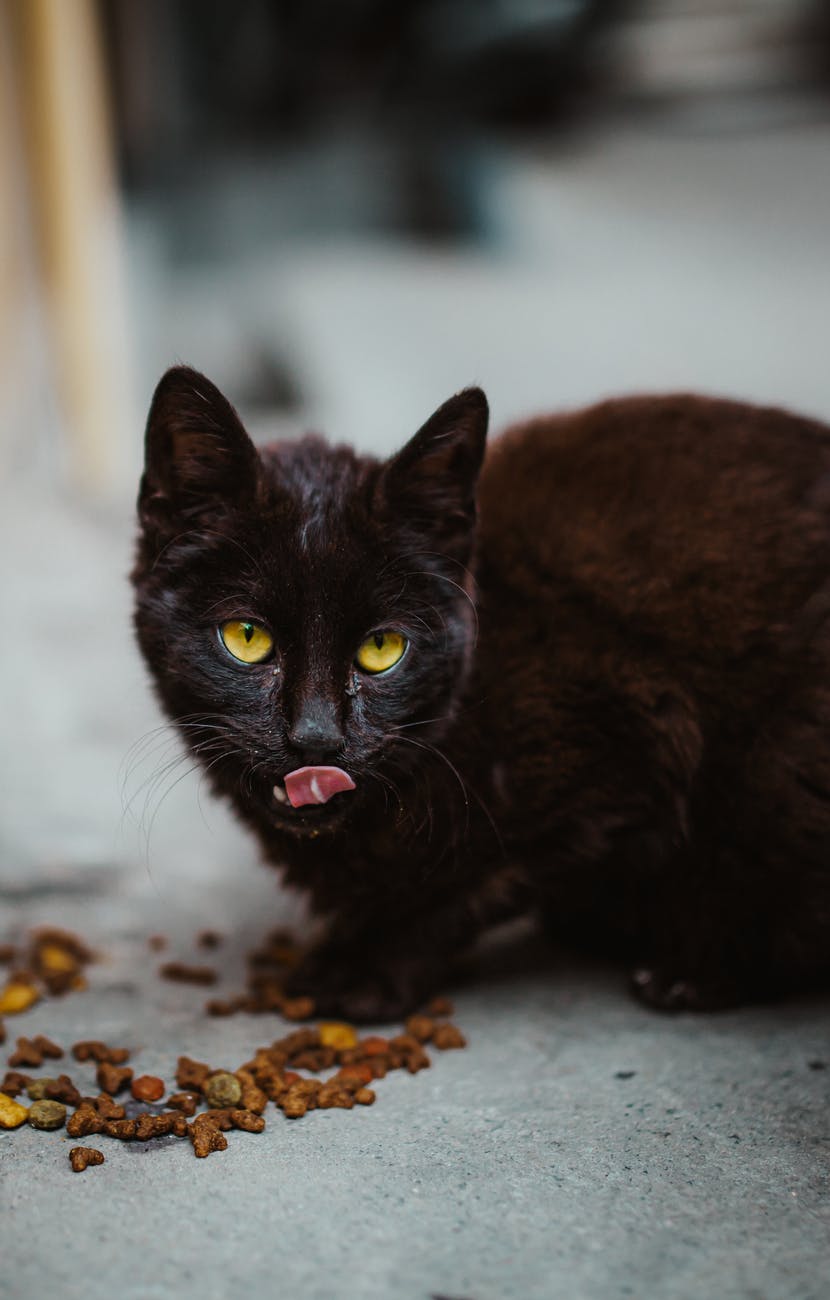
Commercially prepared raw cat foods follow the guidelines set forth by the AAFCO, which is a body that sets guidelines for raw cat food manufacturers.
This means that you can be confident that any commercial cat food will at least provide your cat with the basics of good feline nutrition.
Raw cat food is simply raw meat, bones, and organ meats, so it’s important to make sure you can find an AAFCO statement of nutritional adequacy on any food you’re considering purchasing to ensure your kitty is getting all the nutrients she needs.
3 Basic Methods of Feeding Your Cat a Raw Food Diet
Method One: The Easy, Simple Way
There are a few different ways you can feed your cat a raw food diet, but today we’re going to talk about the easiest and simplest way: using frozen raw food.
Frozen raw foods are available at local pet stores or you can buy freeze-dried foods on Amazon for less money than buying them from a butcher shop or grocery store.
All you have to do is thaw, measure up an appropriate portion and serve. It’s that easy!
My Assessment of PreMade Raw Food Meals
When it comes to feeding my cat a raw food diet, I use BCR because of their convenient and high-quality products (this is not an affiliate/sponsored link).
I also ask my vet what supplements to give my cat, as well as any other information needed!
Feeding a raw food diet to your cat can be easy. The easiest way is by buying pre-made raw meals.
The meals are proportioned correctly so your cat gets the right amount of nutrition and a balanced diet. There is variety in these already prepared raw meals, saving you time and stress when feeding your pet.
All the work is already done when feeding a raw diet to your cat, with no need for grinding or mixing!
Method Two: Use Pre-Made Powder
If you’re looking for an easy way to add raw food to your cat’s diet, consider using a pre-made powder. This method is simple and straightforward.
All you need to do is mix the powder with water and give it to your cat. A pre-made frozen meal is a good option for those who don’t have a lot of time to spare.
However, if you’d prefer to make your own meals, there are many recipes online that can help you get started.
Both METHOD ONE and METHOD TWO are easy to implement, cost-effective, and excellent options.
Both of the methods allow you to feed your cat raw food without any work on your part. In fact, I used to prepare my cat’s meals from scratch before I switched over to raw feeding – and the proof is in the pudding (or should I say in the blood test results).
The raw food diet has outstanding health results when compared with processed foods or kibble diets.
My Assessment of Powder + Meat Mix Meals
I’ve tried a few different brands of pre-made raw food meals for cats, and I think that the TC Feline meals are the best (this is not an affiliate/sponsored link).
They use high-quality ingredients sourced from very high sources, which is reflected in the price.
However, these meals can be more expensive than some of the other ready-to-eat raw food options on the market.
That said, this is a super easy method to switch up your cats’ diets and make mealtime more fun for them!
All you have to do is mix together a powder with meat, then freeze it into manageable portions. There are many different variations on this recipe you can make – so your cat never gets bored!
Method Three: Purchase, Grind and Add Your Own Ingredients (Made From Scratch)
This is the most work-intensive method, but it’s also the most affordable. You’ll need to purchase all of the ingredients outlined in a chosen raw diet recipe.
Pre-ground meat is not advisable due to bacteria issues. It’s important to have time and patience to do it properly so that you can avoid any health problems your cat may face.
Frozen raw food portions can be stored in a zip-lock bag. The pieces of food can be thawed on their own and served as-is or cooked for your cat to enjoy.
My Assessment of Making Your Raw Cat Food
There are a few different ways to feed your cat a raw diet, and each has its own benefits and drawbacks. The three most common methods are:
- Buying pre-made raw food from a pet store or online retailer.
- Make your own raw food recipes at home.
- Feed a premade mix of both cooked and raw foods.
Of these three options, the first is the easiest but also the most expensive. The third option is more affordable but can be time-consuming. And the second option strikes a good balance between affordability and convenience.
It’s important to have a recipe that’s as balanced as possible, with ingredients sourced from quality sources.
This can be cost-effective and more challenging than other methods, but it does provide an abundance of nutrition for your cat which is beneficial in the long run.
It can be convenient to make a large batch of raw food and freeze it into portions so you always have some on hand, especially if you’re not able to cook every day.
Raw food diets are more beneficial than processed diets, but that doesn’t mean they’re always easy to feed. Make sure to balance convenience with health when feeding your cat a raw diet!
A pet food label will provide important information a pet owner should know before deciding to feed their cat raw food.
Make sure to read the label carefully and consult your vet before feeding your cat a raw diet.
Never leave the raw food unattended when there are pets in the home or children present, without supervision from an adult who understands how to prepare it properly for their pet.
Are Raw Cat Food Diets the Same as the BARF Diet for Cats?
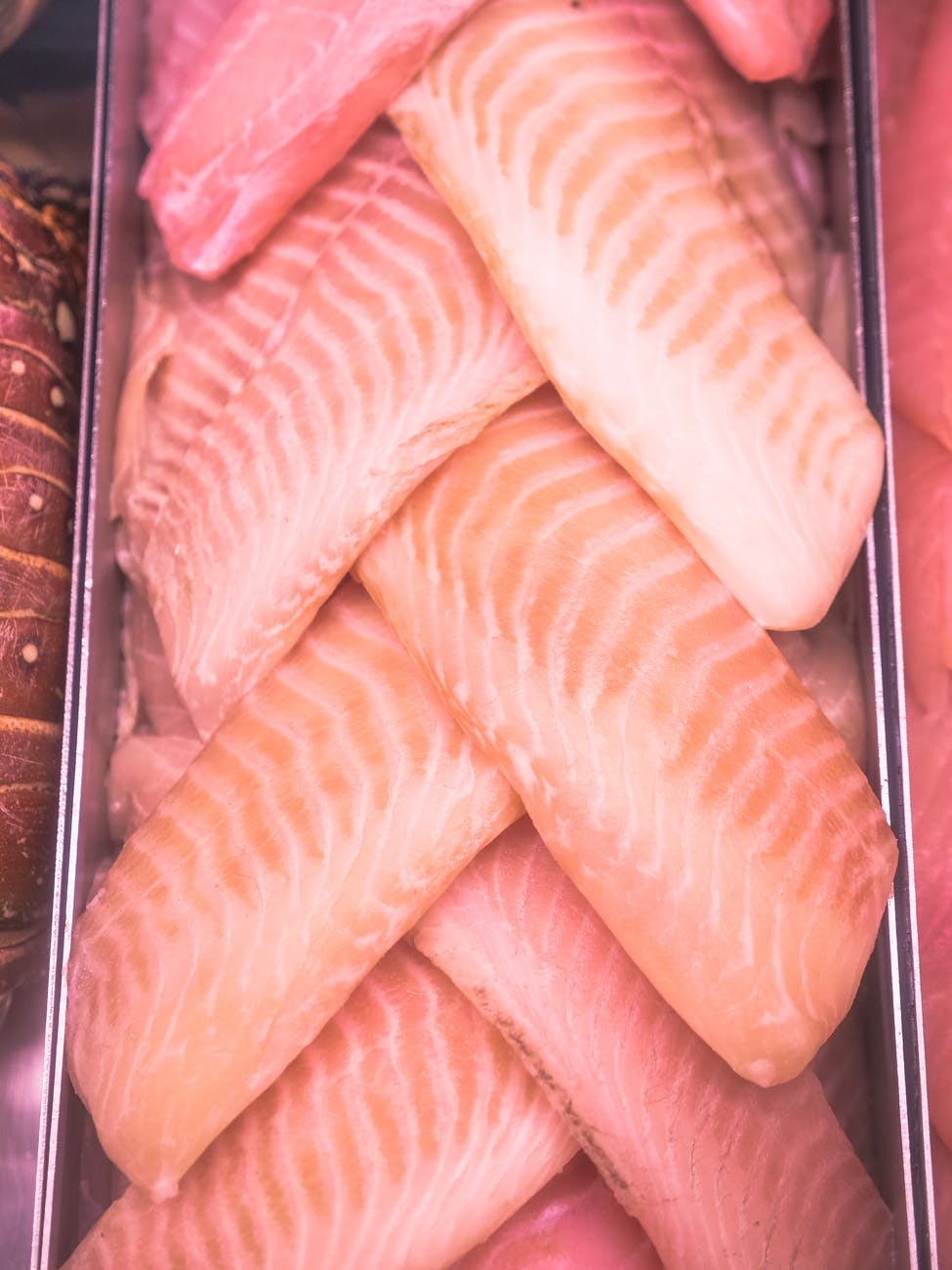
The acronym BARF is sometimes used to describe a homemade version of raw cat food, which includes bones and raw organ meat. The term “BARF” stands for Bones And Raw Food or Biologically Appropriate Raw Feeding. It was coined in Australia by veterinarian Ian Billinghurst.
Raw diets for cats include muscle meats, organs, and bones. However, there are many different variations of the BARF diet.
The pros and cons are similar when it comes to the nutritional value of BARFs versus non-BARFs.
For example, both diets provide high-quality protein as well as essential fatty acids, minerals, and vitamins.
However, some people believe that feeding a cat a raw diet can help prevent diseases such as cancer and diabetes.
On the other hand, there are some risks associated with feeding your cat a raw diet. Cats that eat an imbalanced diet are at risk for a variety of health issues, with the risk increasing with age.
In addition, improperly balanced raw food diets can lead to deficiencies in certain nutrients.
Raw food diets for cats do not have to be the same as the BARF diet. You can still include fruits and vegetables in your cat’s raw food diet without compromising its health.
In fact, variety is key to providing your cat with the nutrients it needs to stay healthy.
Raw food is a healthy option for pets of all shapes, sizes, and breeds.
If you are considering switching your cat to a raw diet, be sure to do your research first and consult with your veterinarian.
Is Raw Cat Food Better Than Other Cat Food?
Water Content
Canned food has more water than raw cat food. When cats eat dry food, they typically consume 30 percent of their daily water intake from their food.
However, when cats eat canned food, they only consume 10 percent of their daily water intake from their food.
This is because canned foods are about 78 percent water, while raw foods are about 70 percent water.
If a cat does not drink enough fluids throughout the day, it can lead to health problems such as urinary crystals and obstruction.
Wondering why your cat scratches the wall frequently? This is why your cat goes crazy scratching the wall by the food/water bowl.
High-Quality Ingredients and Digestibility
Raw cat food can be made from ingredients of varying quality. Higher-quality ingredients tend to result in a higher-quality product.
However, it is important to note that some raw foods are unsafe for cats if consumed in large quantities.
This is because the enzyme that makes them hard to digest is not broken down by cooking.
Nutritional Value
There is no scientific data that raw cat food provides better nutrition than other types of cat food.
Some people believe that it does, as the food is closer to what a cat would eat in the wild, but there is no concrete evidence to support this claim.
That said, raw cat food might provide a nutritional edge over processed foods. However, there are benefits to switching to canned or high-quality dry options as well.
Canned foods typically have more moisture than dry foods, which can be important for cats’ overall health.
Additionally, canned foods often include added vitamins and minerals not found in most dry foods.
What If I Can’t Feed Raw All the Time?
If you’re like many people, you may not be able to feed your pet raw all the time.
That’s okay, you can still give them a healthy diet by feeding them one meal per day or every few days when you can.
Cats can eat raw chicken, but it’s not always a good idea because raw chicken can spread bacteria.
There is an alternative to raw meat: feeding your dog or cat with fresh prepared meats, rather than raw meat.
Freshly prepared meats are cooked and then frozen so that they stay fresh.
This way, you know that your pet is getting the nutrition they need without having to worry about the dangers of feeding them raw meat.
How To Safely Prepare Raw Chicken for Cats
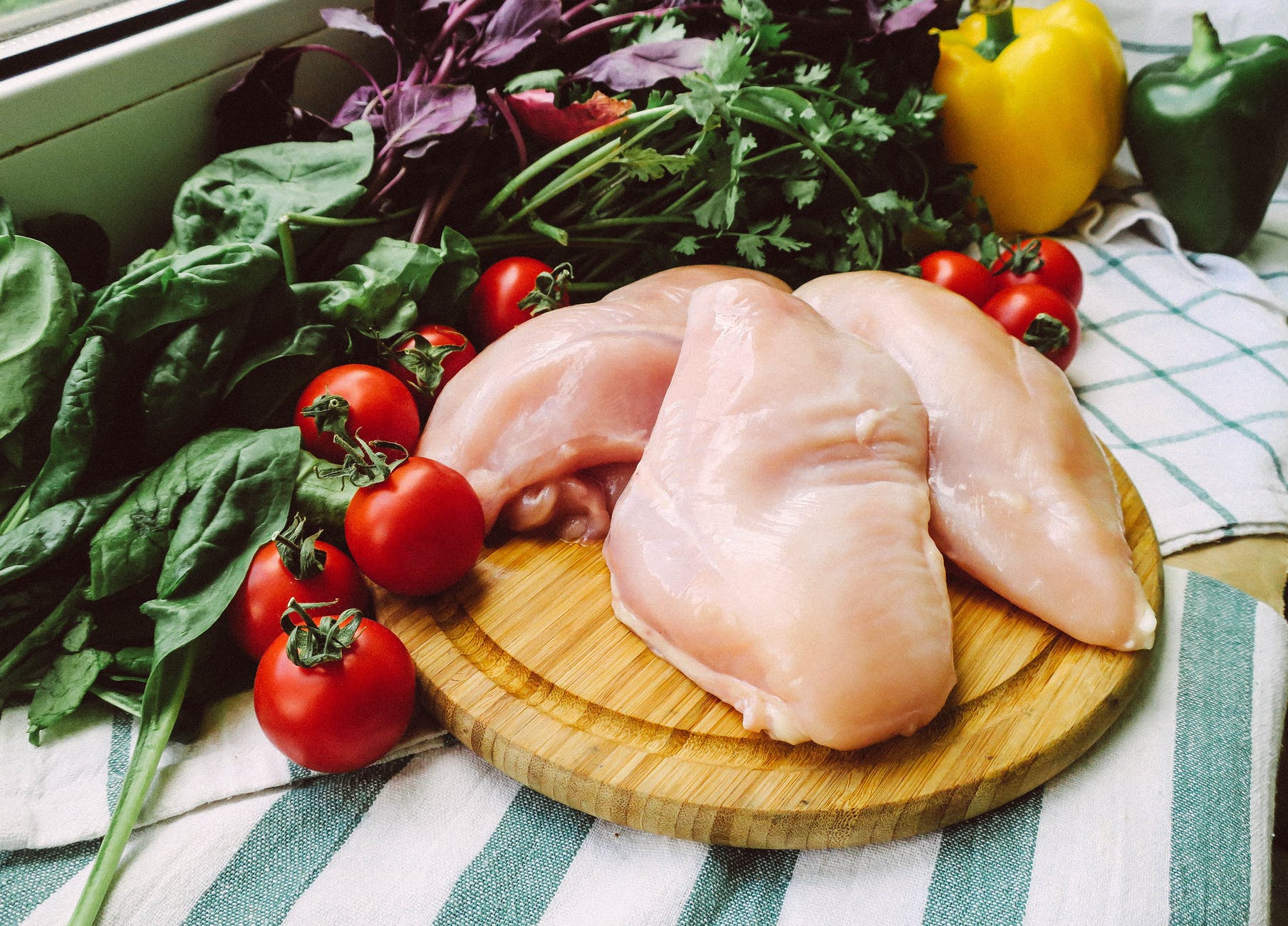
1. Make sure the chicken is fresh.
When buying raw chicken, make sure to check the expiration date. The chicken should not be older than 24 hours.
Chicken that is too old can have dangerous bacteria that can cause illness in both cats and humans.
2. Prep the chicken with care before serving.
When you’re ready to serve your cat raw chicken, be sure to take some precautions first. Make sure to give them the chicken in one sitting.
Additionally, make sure to wash their bowl with soap and hot water after they finish eating.
Chicken should come from a reliable source, and be the freshest product you can find. You’ll want to thaw frozen chicken before serving it as well.
It’s also important to remember that cats shouldn’t eat raw meat on a regular basis. So, if this is something you decide to do, make sure you dispose of the chicken as soon as possible.
If your cat already has a diet of mostly processed food, switching him over completely to raw chicken may not be the best idea. Talk with your vet before making any changes.
And finally, always introduce new foods slowly while decreasing old food gradually.
3. Clean surfaces to avoid the spread of bacteria.
When preparing raw chicken for cats, it is important to clean all surfaces that the chicken may come into contact with.
This includes counters, cutting boards, knives, and utensils. Failure to do so can result in the spread of bacteria and contamination.
In addition, cat owners should take care to sanitize their hands after preparing the chicken. Doing so will help avoid poisoning their pets.
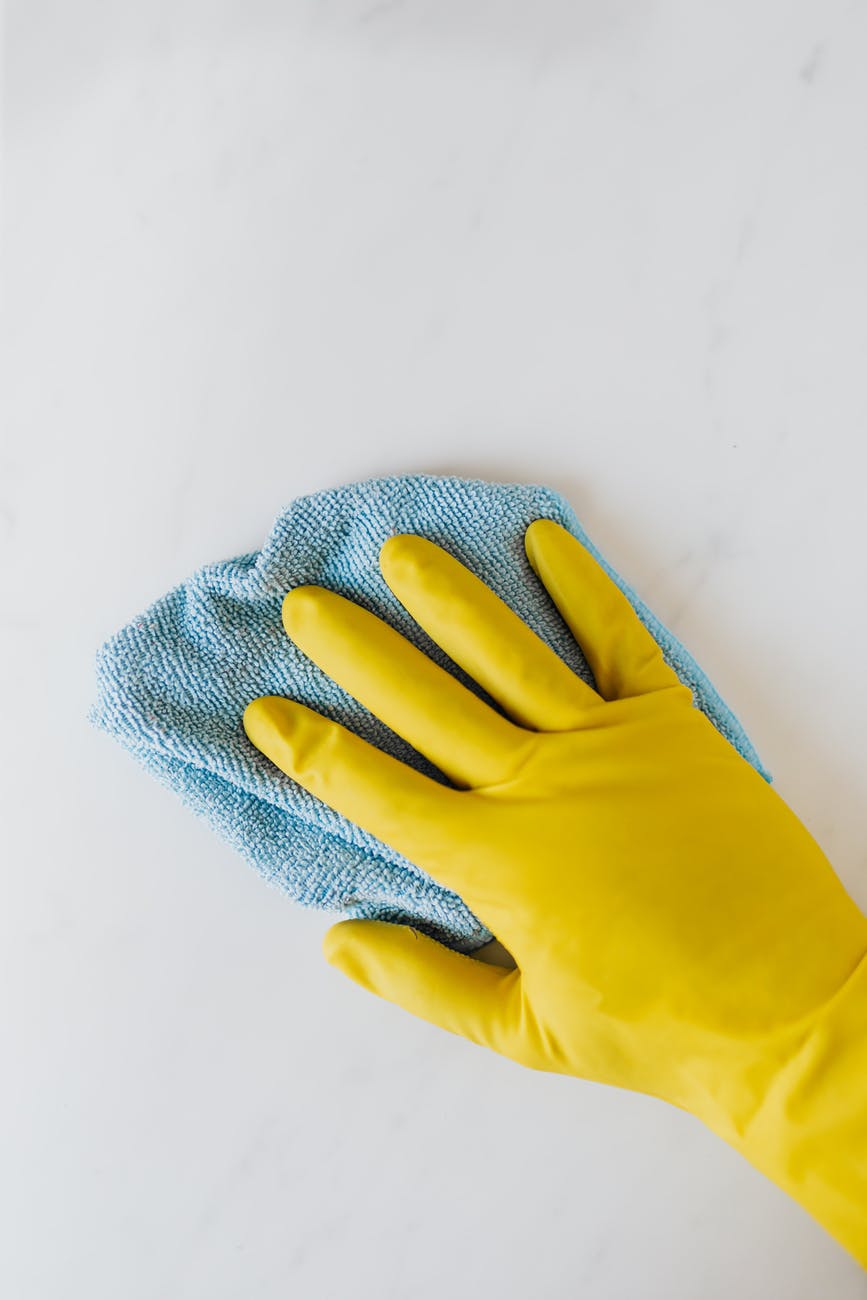
What Should I Do If My Cat Accidentally Ate Raw Chicken?
If your cat eats raw chicken, it’s important to contact your veterinarian as soon as possible. Symptoms of a raw chicken diet can include:
- Lethargy
- Vomiting
- Diarrhea.
In some cases, there may be more serious symptoms such as kidney failure or sepsis.
While there are some benefits to feeding your cat a raw food diet, it’s important to make sure that you’re following a board-certified veterinarian’s recipe.
The “rogue” practice of making your own nutritional recipes puts your cat’s health in jeopardy.
I’ve analyzed hundreds of homemade diets over the years, and the only diet that was close to being complete and balanced was a raw chicken diet.
Before you go, have you ever wondered whether cats can survive on a vegan diet? Well, the answer is yes! Wondering how? Check out this comprehensive post I wrote on cats eating a vegan diet.

